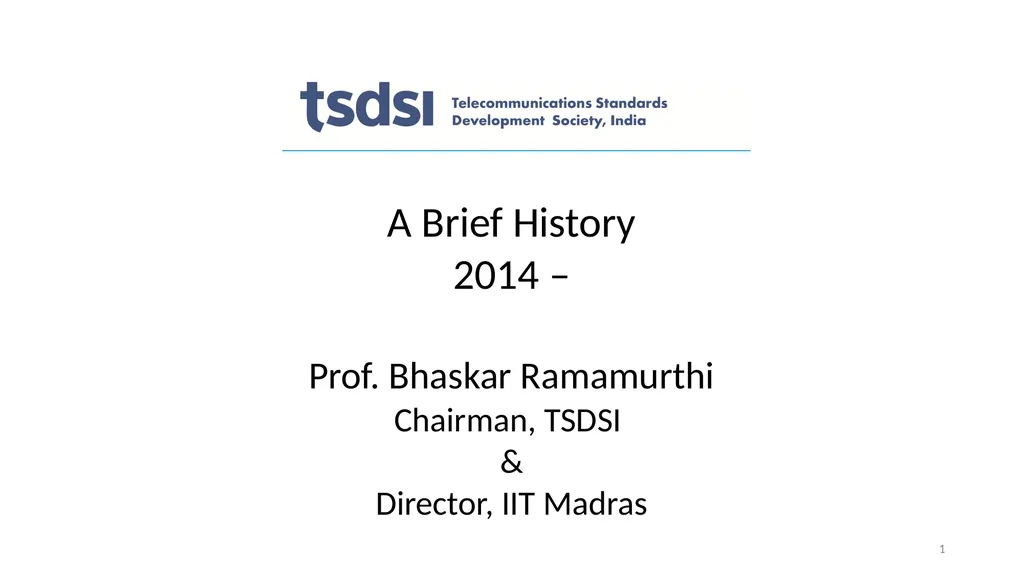1 Need for TSDSI Telecom standards are complex and
Author : min-jolicoeur | Published Date : 2025-05-28
Description: 1 Need for TSDSI Telecom standards are complex and innovations are driven by industry and startups Major geographieseconomies have multistakeholder Telecom Standards bodies that do all the detailed technical work and consensus building
Presentation Embed Code
Download Presentation
Download
Presentation The PPT/PDF document
"1 Need for TSDSI Telecom standards are complex and" is the property of its rightful owner.
Permission is granted to download and print the materials on this website for personal, non-commercial use only,
and to display it on your personal computer provided you do not modify the materials and that you retain all
copyright notices contained in the materials. By downloading content from our website, you accept the terms of
this agreement.
Transcript:1 Need for TSDSI Telecom standards are complex and:
1 Need for TSDSI Telecom standards are complex and innovations are driven by industry and startups Major geographies/economies have multi-stakeholder Telecom Standards bodies that do all the detailed technical work and consensus building ETSI (Europe), ATIS (USA), CCSA (China), TTA (Korea), ARIB&TTC (Japan),… These bodies can ensure that national/regional requirements are addressed and suitabkle solutions included in global standards TSDSI formed to address India’s requirements and provide affordable, customised solutions Now looking to also address similar needs of other developing economies Case study: Rural Cellular coverage After 2G and 3G cellular systems were deployed in India in 1997-2007, we realised that rural coverage for the standard means reaching phones in fast-moving cars on highways and trains Whereas, in India, 800M people live in 0.6M habitations dispersed across 3M sq km Walk in any direction from anywhere – within 2 km you will reach a village with 1300 people on average One tower had to serve villages upto 10 km away Systems built to global standards were unable to provide voice, leave alone data, services to most villages Their ability to serve people in cars moving at 160 kmph – very difficult to achieve – no relevance to us Low Mobility Large Cell (LMLC) What India (and many other developing countries) need(s) is large coverage area but for nomadic or slow-moving users This trade-off not exercised by global standards India tried taking this to ITU WP5D in 2008-9 We even developed a rural channel model for this, and several countries carried out studies But ITU told us to initiate a study item and adhere to the well-defined process for initiating and carrying out to completion such activities We felt the serious handicap of not having a member-driven Standards Body in India which could systematically carry out the studies, attend global meetings, drive consensus, etc Indian Scripts SMS – a missed opportunity In 2G systems, SMS was a major enabler of many services adding great value in developing economies It was conceived as an afterthought for developed economies as a replacement for pagers 140 7-bit characters in Roman script, or ~60 16-bit characters for arbitrary scripts Roman script good for many countries 60 characters good for logographic scripts too, not so for Indian scripts CEWiT@IIT Madras even got 140x7-bit codes included for all official Indian scripts in 2G standard But it was never realised in systems because of lack of a member-driven














